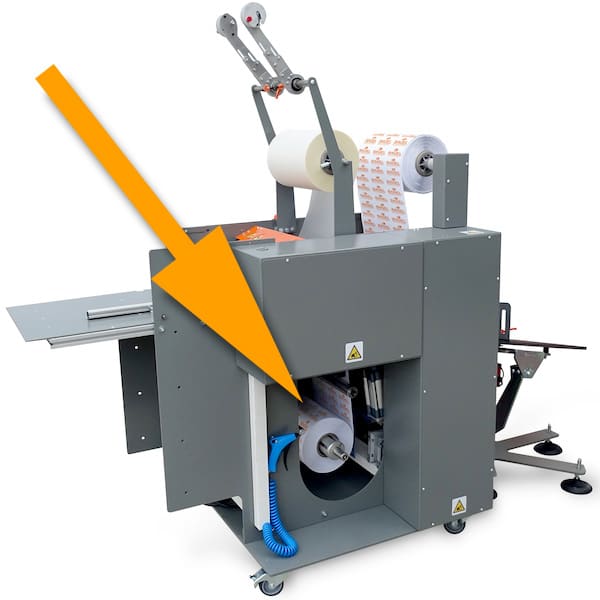Do you want to make film laminating even more efficient? Then we have good news for you. In March, Bagel Systems, one of the industry leaders, introduced new types of film laminators, the iLam Pro and Minlam B3. This new generation of roll-to-roll film laminators opens up numerous possibilities and potential uses.

How the new roll-to-roll film laminating machines work
In the past, the film-lamination process began by laying out the printed sheets first with a flat stacker. Then, the laminating film (as a roll) was joined and glued to the print sheet, one-by-one. From there, the laminated print sheets were again automatically separated into individual, laminated paper sheets.
The new technology eliminates this process of separation entirely. The flat pile feeder feeds the print sheets, laminates them onto the film, one after the other, and then winds them again onto a roll. In addition to printed sheets, printed paper rolls from digital web printing can also be fed onto the Bagel System’s new film laminating machine.
Typical uses for the new film laminating machines
A typical application is double-sided film laminating: in the first run through the machine, the laminated roll is produced; in the second run, the other side is laminated, and the print sheets are separated. The advantage of this alternative method is that the processing of one roll ensures that the flow of production runs rather smoothly.
Other uses include the film lamination of labels printed on a roll and the production of laminated rolls as a follow-up process. Here, too, the key advantage is the smooth flow of the production process, which also requires fewer employees to run it.